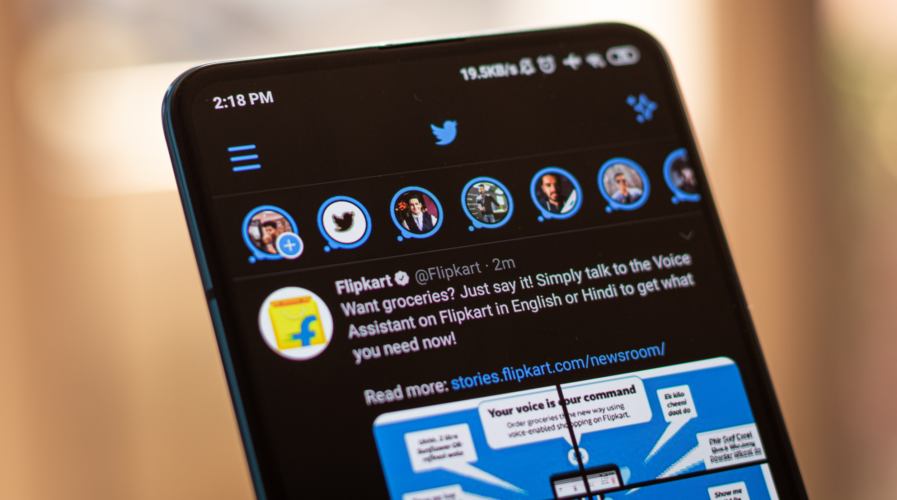
Twitter Fleets. Source: Shutterstock
3 ways social commerce could take off in 2021
- What are Twitter Fleets and Instagram Shop? Their enhancements to your favorite social networks, that might have some nifty business applications as well
2020 has been a roller coaster ride for businesses, and for the marketers and customer service reps who have to promote and manage expectations for their brands during a troubling financial year.
Not only has the pandemic drastically altered consumer behavior and played havoc with industry expectations, but brands need to be aware of the shifting trends and adjust their content and brand messaging accordingly.
In 2021, digital will dominate how businesses interact with and influence their consumers, both existing clientele and potential new customers. 2020 will have seen traditionally physical operations testing their feet in a virtualized environment on a greater scale than ever before in human history, and social media platforms have often emerged as the platform of choice to keep the conversation going with existing customers, or to convert new ones.
Facebook, Instagram, TikTok, and Twitter have all either introduced or have tested out new features this year that could play key roles in engaging fans and drawing awareness to new users.
Shop the Post
E-commerce was already catching on in a big way pre-pandemic, but the pivot to online selling became a necessity for many small and midsized enterprises (SMEs) in 2020. Even with some spending muted due to economic concerns this year, in Asia, there were still historic sales being recorded during peak online shopping seasons like Alibaba’s Singles Day 11.11, which experienced billions in sales volume within the first minute of the sale itself.
In the past, online businesses would experience the disconnect of convincing social media users to opt-out of the social platform and over to the website to complete purchasing. This year, multiple platforms including Facebook, Pinterest, Instagram have all have made selling easier by allowing e-commerce stores to create shop-able posts where consumers can view the product content in a post, and directly decide if they would like to purchase without leaving the social platform.
Facebook-owned Instagram just introduced a refreshed Instagram Shop, which will sport curated content, personalized recommendations, and the ability to connect directly with content creators, online sellers, and other brands.
View this post on Instagram
Social live commerce takes off
2020 saw the social commerce components of multiple platforms really grow in popularity and usage, especially live-streaming product sales over platforms like Facebook Live, Bulbul in India, and Pinduoduo in China. Customers can watch hosts present products live, ask questions about the product, place orders, and in some instances, pay within the app itself.
The concept came into its own as pandemic restrictions saw more people shopping from their couch than ever before. And like the prior explosive growth of augmented reality (AR) in retail applications, live commerce streams allow users to somewhat observe the product in action, for example, the seller could try on apparel items to show how they fit.
The explosive growth of social commerce has seen e-commerce platforms launch their own commerce livestreams like China’s AliPay and the two most popular e-commerce sites in Southeast Asia, Lazada’s LazLive TV and Shopee LIVE, which do brisk business during sales period that should be even more pronounced next year.
In the US, the social commerce industry as a whole is expected to bring in US$23.26 billion in sales in 2020, and US$53.94 billion in 2024, according to eMarketer estimates.
Twitter Fleets disappear in 24 hours
Both WhatsApp and Twitter have just revealed that their platforms will introduce the disappearing messages featurette that Snapchat once made famous, and that WhatsApp parent company Facebook replicated across all its social platforms as ‘Stories’ including on flagship Facebook, Instagram, and WhatsApp itself.
WhatsApp will soon let users send messages that self-disappear after seven days. Once enabled from settings, the new messages sent in the individual or group chat will disappear automatically. With over 1.3 billion active users on the Facebook Messenger App with 10 billion messages sent between users and businesses, it is a safe bet that this disappearing message feature will make its way onto the Messenger app in due time.
And Twitter’s new ‘Fleets’ feature will comprise tweets that disappear after 24 hours and will appear at the top of the Twitter timeline in the same vein as Stories appear at the top of Instagram and Facebook.
Twitter Fleets was designed to make users who are uncomfortable with the pressure of publicly broadcasting all their thoughts and the online abuse that sometimes comes attached. Twitter Fleets is currently being tested, and will be available for both Android and iOS devices within a number of days.
At first glance, the business advantage might not be so apparent for messages that simply vanish, making traceability harder to manage in the conversation. But with WhatsApp also rolling out its payments service in India and perhaps soon elsewhere, it is not hard to imagine that small-time sellers on a platform like WhatsApp can send sensitive data like price quotes or payment detail info, and have that data be deleted permanently within seven days.
READ MORE
- Safer Automation: How Sophic and Firmus Succeeded in Malaysia with MDEC’s Support
- Privilege granted, not gained: Intelligent authorization for enhanced infrastructure productivity
- Low-Code produces the Proof-of-Possibilities
- New Wearables Enable Staff to Work Faster and Safer
- Experts weigh in on Oracle’s departure from adland


